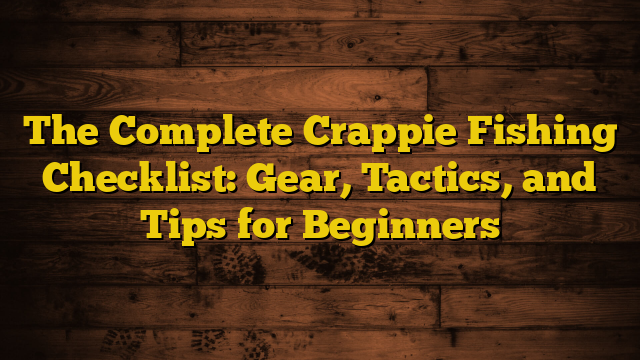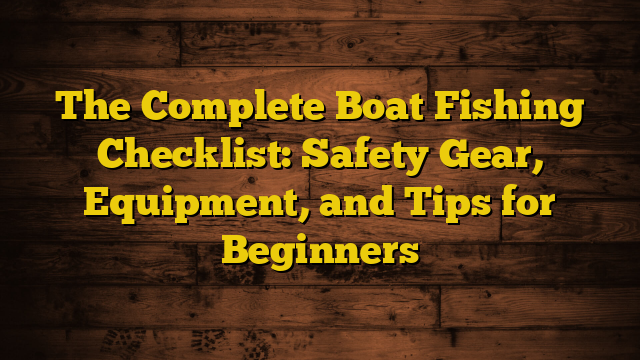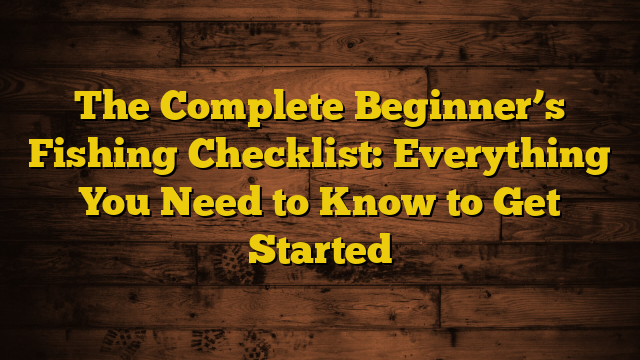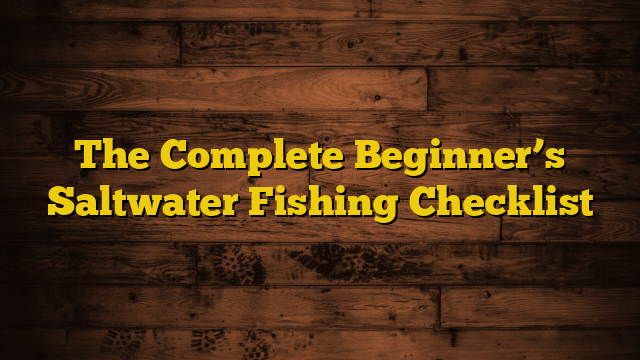Ready to start reeling in hard-fighting catfish? This detailed catfish fishing checklist will provide everything needed, from rods and reels to rigs and techniques, to help beginners hook channel, blue, and flathead catfish.
Few freshwater fish are as widely pursued as catfish, thanks to their huge size potential, willingness to bite, and great taste. But successfully catching catfish does require some specialized tackle and approaches compared to other species.
Use this comprehensive guide to prepare yourself for productive days on the water targeting these whiskered giants. We’ll cover catfish behavior, seasonal patterns, go-to baits, ideal habitat, rigging methods, and fighting tactics to prime first-timers for success. Follow this checklist closely and landing your personal best catfish becomes much closer to reality.
Rod and Reel Recommendations for Catfish
Beefy catfish rods and reels allow anglers to easily manage heavy fish and tackle. Ideal beginner set ups include:
- 7-8’ heavy power medium-fast action rod – Has backbone stopping bulky fish quickly
- Baitcast reel with smooth drag and geared for 30+ lb. test – Handles long runs and heavy lines
- 20-30 lb. test monofilament line – Abrades less and absorbs head shakes
- Rod/reel combos under $150 – Deliver reliability without breaking the bank
With the right catfishing outfit, you’ll have a blast tiring out fat cats without wearing out your arms.
Must-Have Catfish Fishing Terminal Tackle
Terminal tackle like circle hooks and sinkers allow natural presentation and solid hooksets when bites come. Always pack:
- 5/0 – 8/0 circle hooks – Catch corner of mouth on bites
- Slip sinker weights 1 – 8 oz – Get bait down and anchor rigs in current
- Beads and floats – Protect knots and indicate bites
- Snaps and swivels – Quickly change rigs and baits
- Leader material – Prevent bite-offs from sharp gill rakers
The right terminal tackle is crucial for keeping bait in place and landing hooked fish.
Effective Catfish Baits, Scents, and Attractors
Matching the bait to conditions and targeted catfish species triggers more consistent bites. Must have baits include:
- Cut fish like shrimp, herring, shad – Fresh or prepared blood and dip baits
- Nightcrawlers – Whole or halved worms are irresistible
- Chicken livers, hearts, shrimp – Inexpensive but effective catfish candy
- Dough baits like stink baits – Pungent attractant formulas
- Dip baits and sprays – Apply additional scent to bait
- Soap bars – Blue or strawberry scented suds chum and attract catfish
- Live bait like minnows and sunfish – Friskier than cut bait
Keep bait fresh and re-bait frequently. Vary presentations until you trigger a bite.
Helpful Catfish Fishing Tools and Gear
Specialized catfish gear and extras help anglers handle fish and tackle safely and effectively:
- Needle nose pliers – Unhook fish without injury
- Dip nets – Safely scoop up catfish too large to grip
- Stringer and/or livewell – Keep fish alive and fresh in the water
- Tackle storage like boxes and trays – Cats can be messy when baiting up!
- Headlamp – Allows pre-dawn and night bite fishing
- Stiff fishing rods – Prevent swallowed bait and detect any nibble
- Sinkers and weights – Anchor bait in currents and water depths
- Hook removers – Unhook fish while protecting hands
- Bait boxes – Keep chicken livers, cut bait organized
- Gloves – Protect hands from spines on dorsal and pectoral fins
Come prepared with catfish tools for increased convenience when running multiple poles.
Locating Productive Catfish Fishing Spots
To find actively feeding catfish, focus on locations like:
- Channel turns and junctions – They sit and wait to ambush passing prey
- Below riffles and rapids – Increased oxygen levels catfish prefer
- Dams and obstructions – Force baitfish into confined areas
- Muddy or silted bottom runs – Allows catfish to hunt using sensors
- Creek holes and outside river bends – Breaks in current hold fish
- Submerged structure – Downed trees, brush piles, or rock piles
- Shorelines with easy access – Allows cats to feed under the cover of darkness
- Around bluegill or shad spawns – Key in on events that deliver big meals
Use seasonal patterns, electronics, and structure to identify sweet spots.
Useful Catfishing Resources for Beginners
Learning from veteran anglers through videos, books, magazines, and tackle shops will prime you for success. Helpful catfishing resources include:
- Regional fishing forums and groups – Connect with nearby catfish anglers
- YouTube tutorials – Knots, rigging, bait prep, fish finding videos
- Websites like WhiskerSeeker – Species-specific tips and tactics
- Books like “Catfishing: Beyond the Basics” – Advanced lessons and strategies
- Magazines like Catfish NOW! – Stories on monster cats, gear, and locations
- Local bait and tackle shop – Ask questions and get pro advice
- State fishing agency sites – Seasons, limits, identification, and water conditions
- Social media groups – Get real-time bite updates and advice from locals
Tap this wealth of catfishing knowledge to avoid the painful trial-and-error learning curve. Finding monster cats becomes much easier.
Get Started Reeling in Your Catfish of a Lifetime
This complete catfish fishing checklist prepared you to start targeting whiskered giants near you. Follow it closely and checking a new personal best catfish off your bucket list is within reach.
Be patient while honing techniques like bait preparation, rigging, finding holes, and fighting bulky fish. Catfishing skills improve through hands-on experience. Follow regulations and obtain fishing licenses as required.
Soon enough you’ll have the expertise to pay forward knowledge by coaching other newcomers to catfishing. That friendly guidance perpetuates the sport we all love.
Don’t wait until next season wishing you caught more cats this year! Use this detailed guide and make memories landing the catfish of a lifetime – whether it’s your first fish or a new record.







